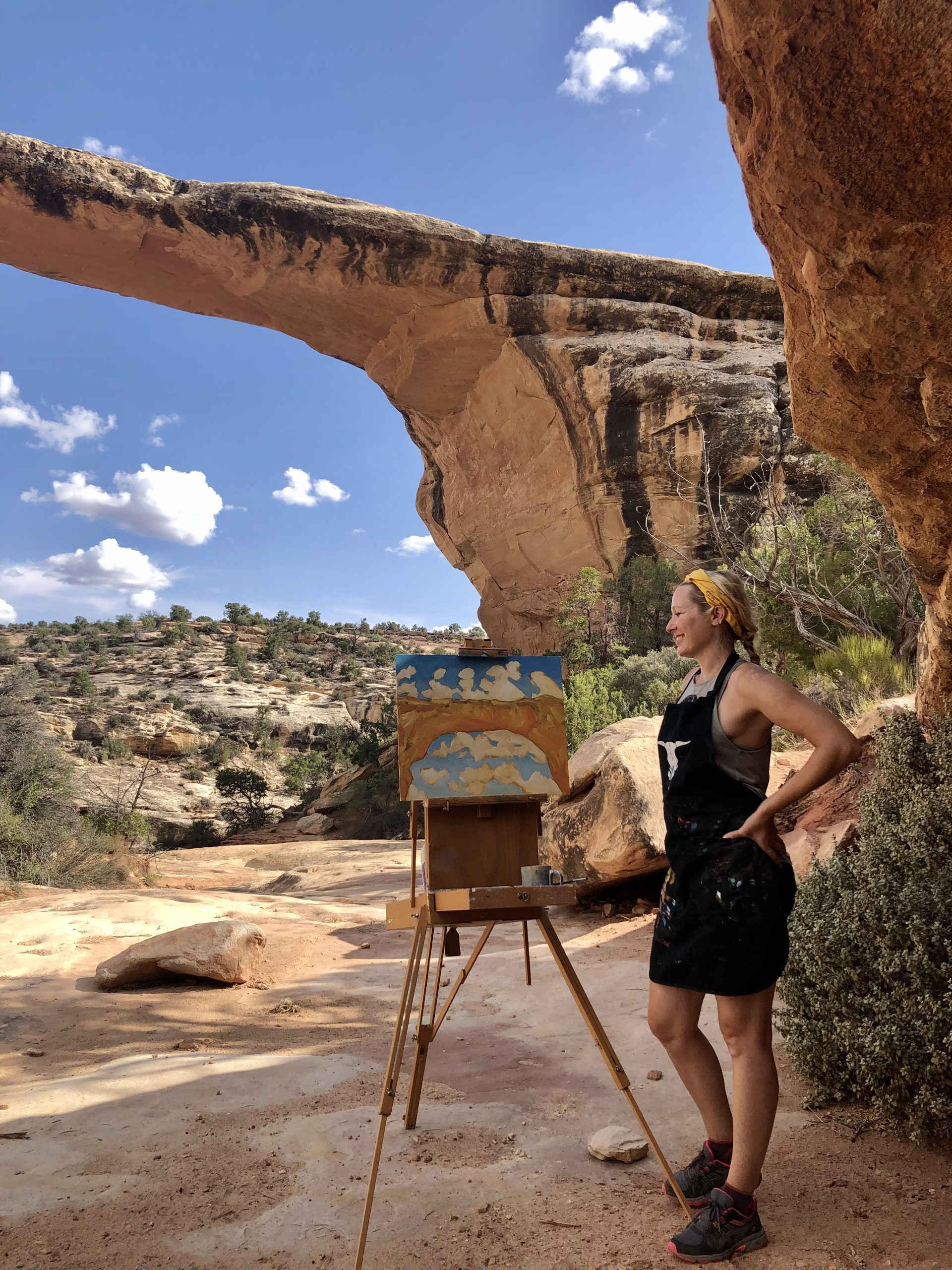Some information may be outdated.
Julia Buckwalter has an entrancing way of capturing the movement of desert clouds in her paintings: she’s drawn to big, fluffy clouds that roll over the sky, bringing the promise of rain; patchy clouds that offer the barest solace from sunlight; wispy clouds that drag through the horizon.
Over the past seven months, she’s been painting the clouds and the landscapes within Arches and Canyonlands national parks and Natural Bridges and Hovenweep national monuments as the 2021 Community Artist in the Parks. Buckwalter’s time as the 2021 Community Artist began April 1 and ended October 30.
“I am drawn to the sweeping desert landscapes and majestic skies that made up my life from birth in Egypt to childhood in Utah and New Mexico,” Buckwalter wrote on her website. “The drama of endless desert, mountains, bodies of water, and sky to me are the expressions of the infinite.”
Buckwalter has been an artist ever since she was little, but only started calling herself an Artist, as a job title, about 10 years ago when she started choosing to paint in order to sell paintings, she said. She moved to Moab in February of 2012. In 2019, she was pushed to apply to the Community Artist Program by Antonio Savarese, her partner and former Artist in the Parks in 2019.
The Community Artist Program began in 2009 as a “way to highlight the connection between local artists and the landscapes contained within the parks of the National Park Service’s Southeast Utah Group,” according to the NPS. Each year, a small committee chooses a new artist to spend at least 24 hours each week, from April 1 to October 31, painting in the parks. The program is unpaid—artists must volunteer their time, but the works they create are sold in the park gift shops.
Buckwalter is a large-scale artist; she paints with oil on canvas and panel “en plein air” style, meaning outdoors, and using photographs in the studio. Initially, she found the transition to painting on a smaller scale—which was necessary, as she painted in the field—difficult.
“What I discovered was that spending specific, designated time studying a rock structure, an arch, or whatever it was, it really allowed me to see in focus and notice the park, whether or not I was necessarily succeeding in all of my paintings,” Buckwalter said. “It feels like you’re reintroducing yourself to the different rock formations.”
Another aspect of being the artist in the parks is visitor engagement; artists are expected to greet visitors who approach and encourage them to ask questions. Interacting with visitors is no small feat in Arches National Park especially, which sees over a million visitors from April to October. This year, the park closed its gates almost every day in September and October.
“I think I probably had a bit more of a romantic notion of how easy it would be,” Buckwalter said. The parks sometimes felt crowded and rushed, she said. But she experienced really powerful interactions too, especially with children, who approached Buckwalter with a sense of inspired awe.
“A lot of them know what art is, they’re exposed to art on a daily basis as we all are without realizing it,” Buckwalter said. “But I don’t think many of them, if any of them, had ever seen someone standing outside, painting in nature. So I could tell that that really affected them and really felt special for them to witness.”
Plein air painters tend to say that only 50% of what they work on outside is considered a success; Buckwalter estimates that with visitors talking to her on and off, her success rate felt more like 25%. But the experience was what she did the program for, not so much the painting success, and being a studio artist, she felt that the experience to paint so regularly in national parks was “once in a lifetime,” she said.
“The point of being out there is not just creating a perfect finished product every time,” she said. “It’s about what you see, and what you’re learning as you’re looking, and how that changes you, and how you see your subject matter. It was interesting to see how it almost seems like a radical thing to just stand outside and paint for hours in this modern world.”
Buckwalter’s paintings, available as originals, prints, and postcards, are on display at Moab Made (82 N. Main Street, Moab). She can be followed on Instagram @reddirtpainter or at her website, www.juliabuckwalter.com.
Appreciate the coverage? Help keep local news alive.
Chip in to support the Moab Sun News.





